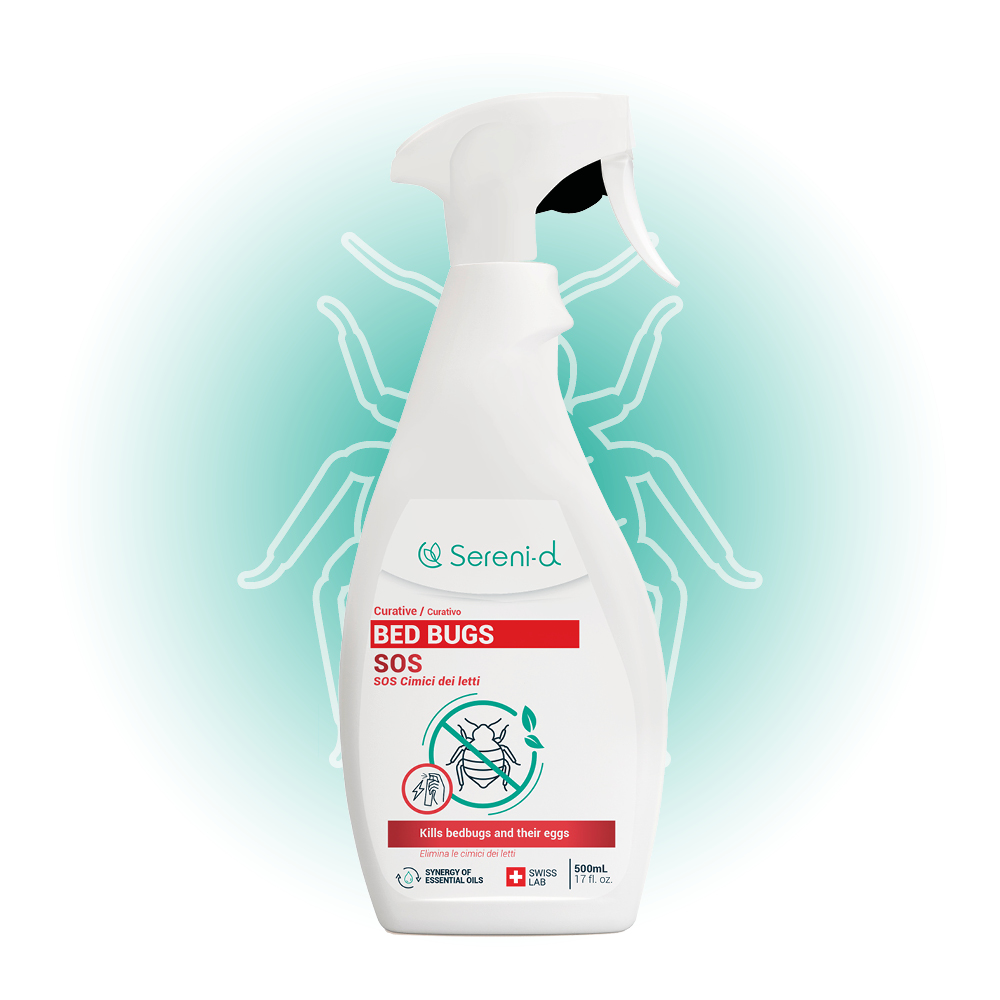Do you have bed bug bites? Do you notice droppings on your sheets, mattress and around your bed? Even if you can’t visually detect the presence of live insects, molts or corpses, an anti-bed bug disinsectisation protocol needs to be put in place quickly. Remember that the infestation cycle is progressive, andtreatment should be carried out as soon as possible. Here are the various stages of the protocol to be followed before, during and after.
Confirming bed bugs infestation
Before implementing a disinsectisation protocol, it is essential to confirm the presence of bed bugs in your home.
Early detection means you can act quickly to prevent a massive spread of these pests.
Examine bites
One of the first indicators of bed bug infestation is the appearance of bites on the skin. These usually appear as small red pimples, grouped in lines or clusters on exposed areas of the body during sleep, such as the arms, legs, back or neck. These pimples can cause intense itching, but are not always painful.
It’s important to distinguish bed bug bites from those caused by other insects, such as mosquitoes or fleas. Bed bugs feed at night, which explains why bites often appear on waking. Another characteristic is their straight-line alignment, which is due to the way bedbugs move across the skin in search of blood vessels.
Note that the appearance of bites can vary from person to person, with some people having no visible reaction (which doesn’t necessarily mean there are no bed bugs).
Also read: How to relieve bed bug bites?
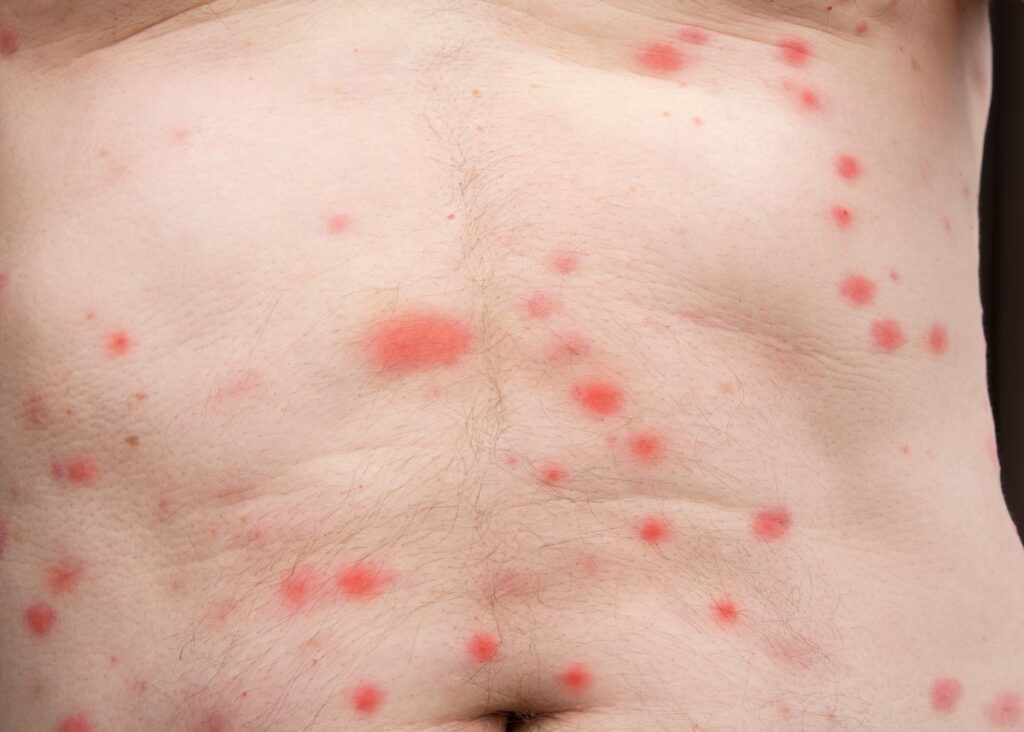
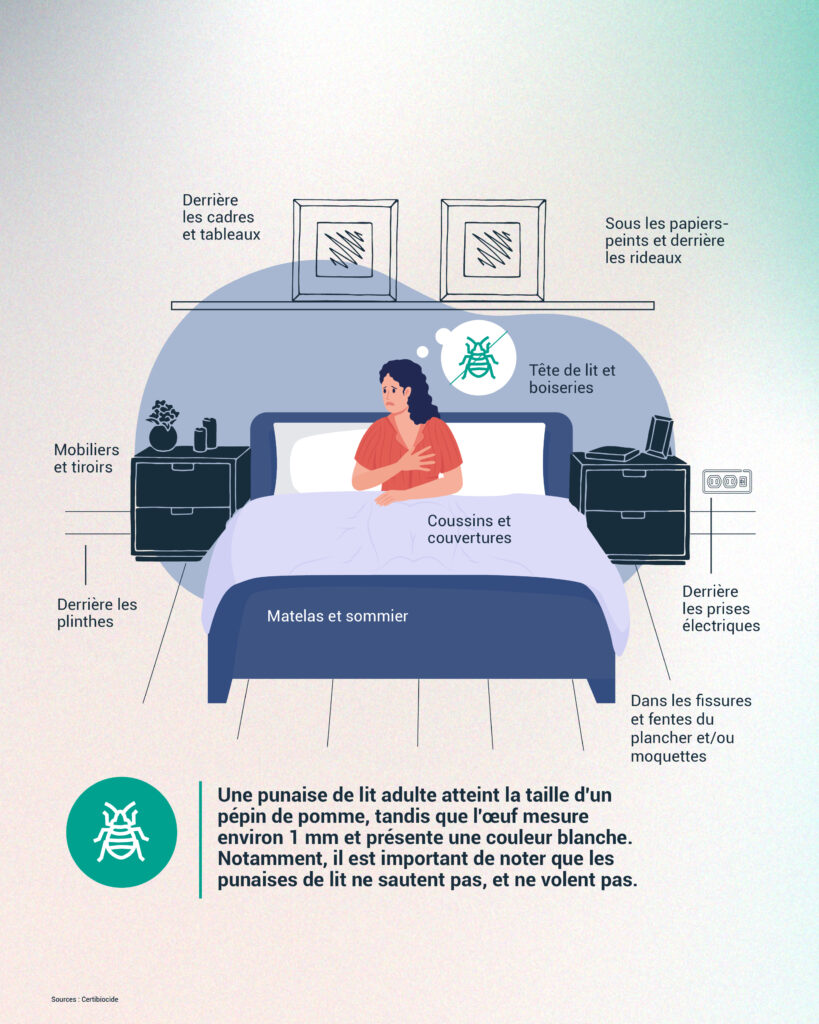
Examine your home
Bed bugs nests are mainly found on wood / paper and textiles. They can be found in bedrooms, living rooms and hallways. Their presence is much rarer in kitchens, bathrooms and WCs. However, in the event of heavy infestation, bed bugs can be found everywhere (even in bat, swallow or pigeon nests on balconies!).
Here’s where bed bugs usually hide:
- behind frames and pictures ;
- under wallpaper and behind curtains;
- in furniture and drawers;
- behind baseboards and electrical outlets;
- in cracks and crevices in floors and carpets;
- inside box springs, mattresses and bedding.
When treating against bed bugs, priority should therefore be given to bedrooms, living rooms and passageways.
Good to know: Dog detection is an effective method of finding bed bugs.
Anti-bed bug protocol prior to chemical treatment
The success of a treatment depends on 30% of the work carried out by chemical/thermal/mechanical treatments, and 70% of the work carried out by an upstream protocol !
This is the protocol that every professional should recommend to his or her customers.
It ensures that all infested areas are properly treated, and prevents bed bugs from spreading to other parts of your home.
Instructions to follow
- Be sure to carry out the protocol described below 3 times, 10/15 days apart.
- Do not clean your home for at least 2 days after treatment, as this may remove the active ingredients.
- Continue to sleep in your bedroom for the duration of the treatment, to encourage bed bugs to come out of hiding and be exposed to the residual product (effective for a few days).
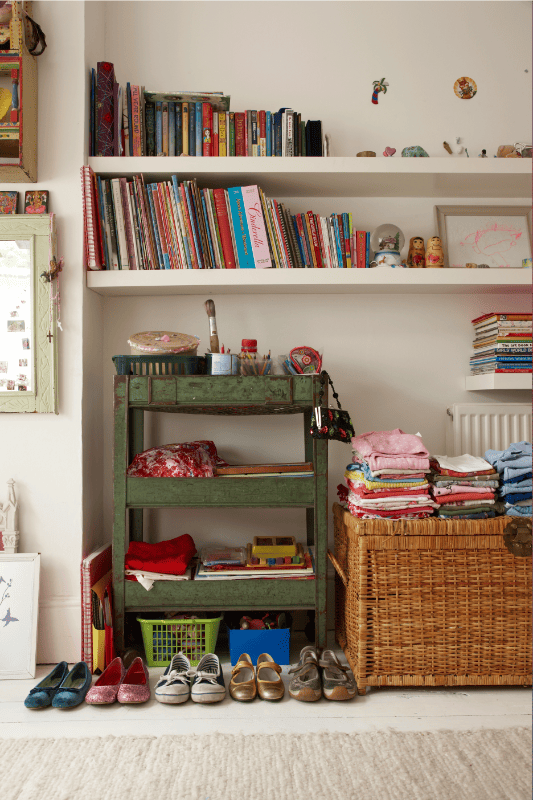
Room preparation
- Clear spaces around beds, furniture and walls to allow full access to areas likely to harbor bed bugs.
- Light furniture, such as chairs or small tables, should be moved to the center of the room to facilitate product application.
- Remove personal objects, books and knick-knacks from surfaces and store them in plastic bags or airtight boxes to avoid contamination.
- Place fragile textiles and books in a freezer at -18°C for a minimum of 72 hours;
- Keep treated textiles and objects in airtight boxes for the duration of the treatment (keep only the bare minimum) and place them in healthy rooms (bathroom / WC / kitchen);
- Carry out a thorough vacuum cleaning to remove the worst of the dirt (discard and wash the vacuum trays afterwards). Active ingredients work best on clean surfaces.
- Remove frames and pictures;
- Fill all cracks and gaps in floors and walls;
- Remove baseboards and electrical covers;
- Remove fabric from beds, sofas and armchairs;
- Dismantle bed legs, box springs and slats, and place beds (box spring + mattress) in cathedral position;
- Seal potential air intakes (e.g. mosquito nets over air vents);
- Remove loose wallpaper or torn carpets if necessary;
- Empty all furniture and place contents in airtight boxes after washing or freezing;
- Lower housing temperatures as much as possible, as bed bugs reproduce more rapidly in overheated conditions.
Treat linen and clothing
Bed linen, clothing and other textiles that have been in contact with bed bugs must be treated before treatment begins. Wash all textiles at high temperature (at least 60°C) to kill bed bugs and their eggs.
After washing, tumble dry at high temperature for at least 30 minutes.
Items that cannot be washed should be placed in airtight plastic bags and exposed to the sun’s heat for several hours, or frozen for several days to eliminate the insects.

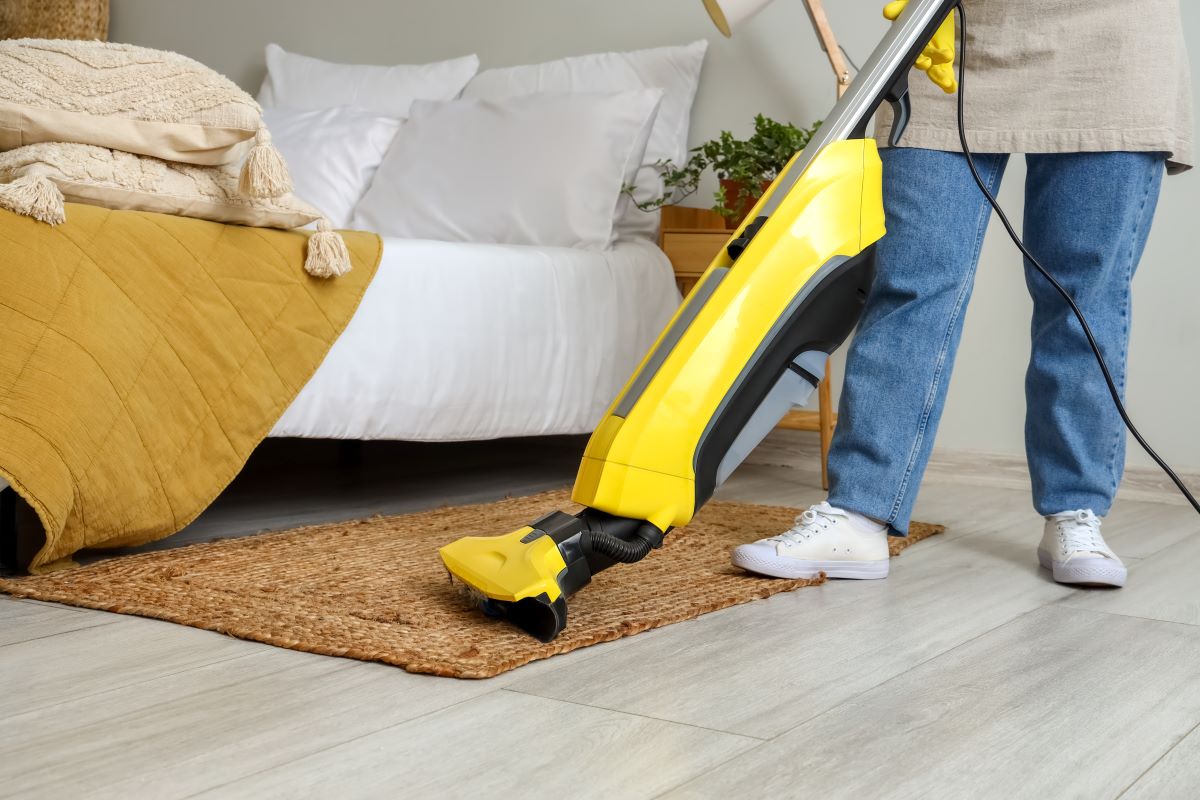
Vacuum cleaning
Before applying treatments, vacuum all mattresses, box springs, upholstered furniture and along baseboards.
Be sure to also vacuum cracks, crevices and other potential hiding places.
Once you’ve finished cleaning, dispose of the vacuum bag immediately, or empty the contents into an airtight plastic bag and dispose of it outside the house to prevent re-infestation.
Heat cleaning
Heat is one of the most effective ways of killing bed bugs. In addition to high-temperature washing, you can use a steam cleaner to treat hard-to-reach areas, such as mattress seams, cracks in furniture and nooks and crannies in rooms.
Steam must be applied slowly to ensure that the heat penetrates sufficiently to kill bed bugs and their eggs. This heat treatment is particularly useful for objects that cannot be washed or frozen.
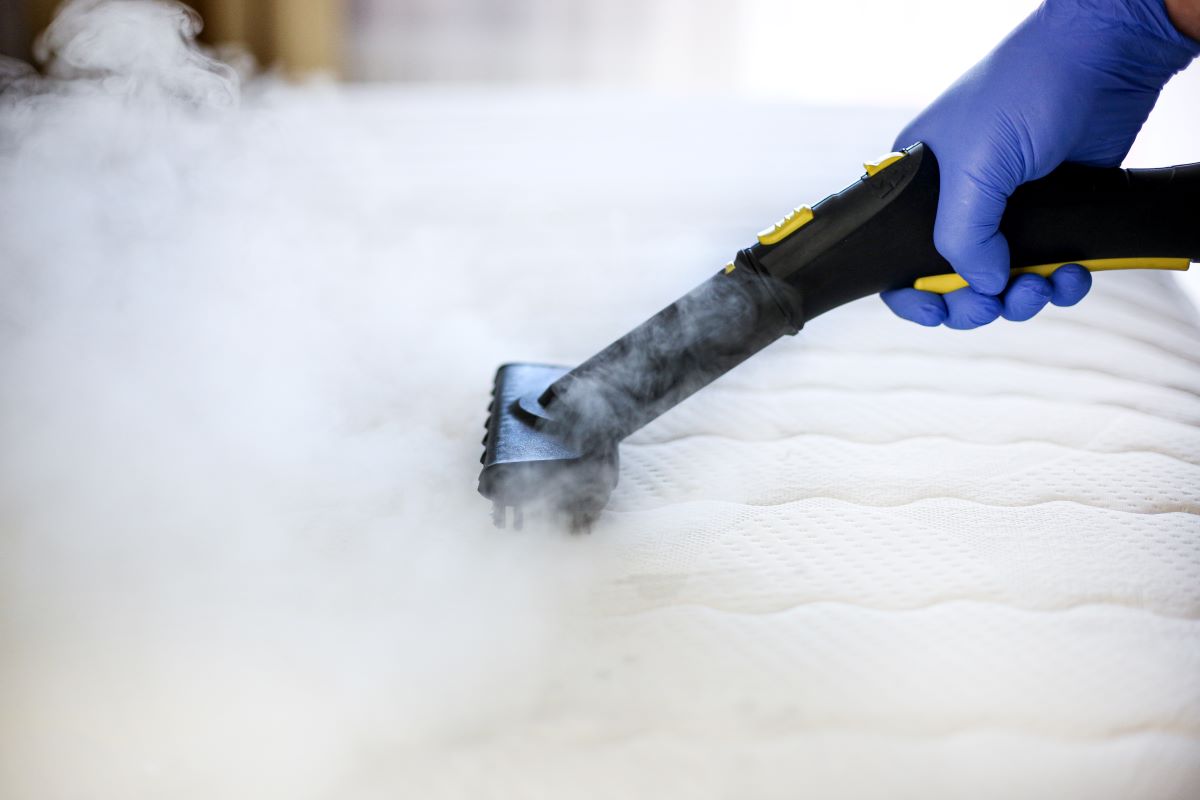
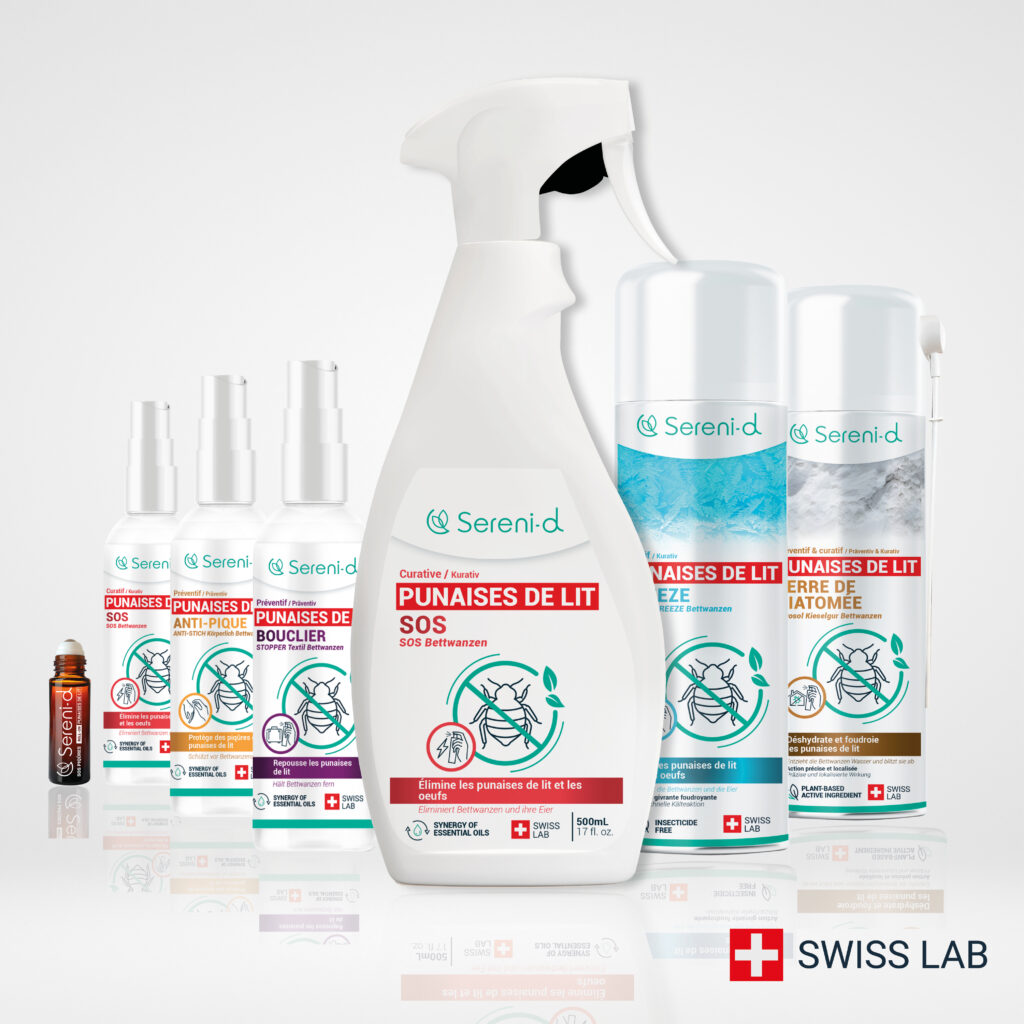
Use specialized products
We recommend our Sereni-d range of products to all our customers, enabling the individual to achieve professional results.
For effective elimination of bed bugs, it is necessary to combine our following solutions:
- Spray with SOS Bedbugs spray, which eliminates 100% of bed bugs (eggs, larvae, adults) for a shock treatment.
- Spray with diatomaceous earth, a natural solution that dries out the insects, which then die within a few hours for a residual effect of 3 weeks
- Use Cryo Freeze treatment, a 100% natural bed bug freezing solution for sensitive areas such as children’s bedrooms or cots.
Chemical treatment against bed bugs
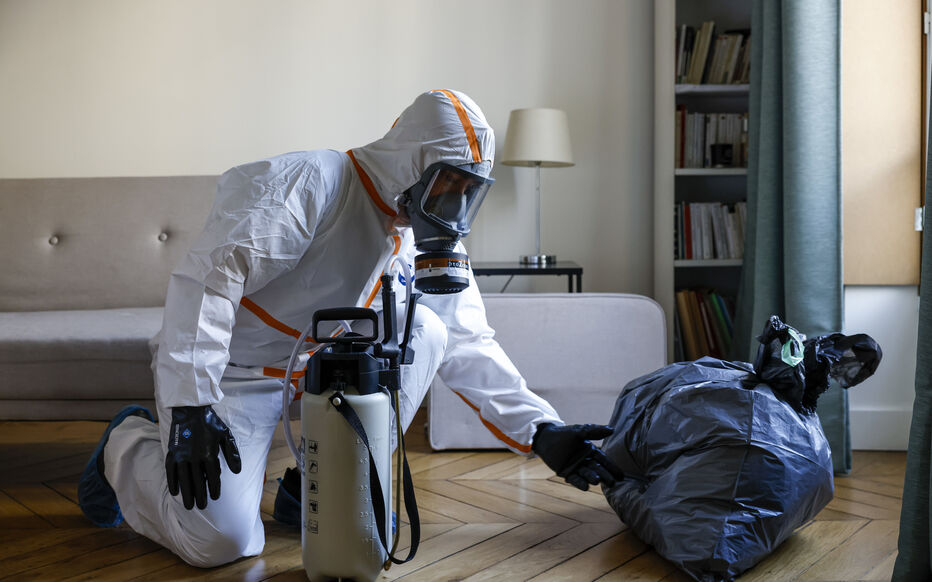
Thanks to Sereni-d, individuals have everything they need to deal with bed bugs. But if the infestation persists and you’re feeling overwhelmed, we recommend you call in a service provider who has obtained Certibiocide accreditation (certifying that technicians are properly trained to handle powerful insecticides). This professional will be able to guide you through the process, and in particular to ensure that you follow the correct protocol depending on the configuration of your home.
Good to know: to avoid fraudulent intervention, here’s a map of approved professionals.
Please note: the company must undertake to intervene at least 2 times, approximately 15 days apart.
A second pass allows the insecticide to act on young bedbugs once the eggs have hatched.
Don’t hesitate to ask for quotes from several companies, as prices and services vary widely.
The protocol after bed bug treatment
AAfter bed bug treatment, it’s essential to implement a rigorous post-treatment protocol to ensure that the infestation is completely eradicated and to prevent any re-infestation.
Here are the steps to follow after treatment:
- Inspect infested areas regularly, especially mattresses, box springs, furniture and dark corners of the room.
- Avoid cleaning treated floors and areas during the period recommended by the professional.
- Vacuum regularly and empty the bag immediately into an airtight bag.
- Ventilate your home every day.
- Seal all high-risk areas: cracks, fissures, holes, skirting boards, etc., with putty or plaster.
- Continue to sleep in your bedroom, and don’t move from one room to another.
- Leave your clothes and belongings in bags for at least a month. Take out only what you need.
For more information, see the ARS anti-bed bugs protocol.
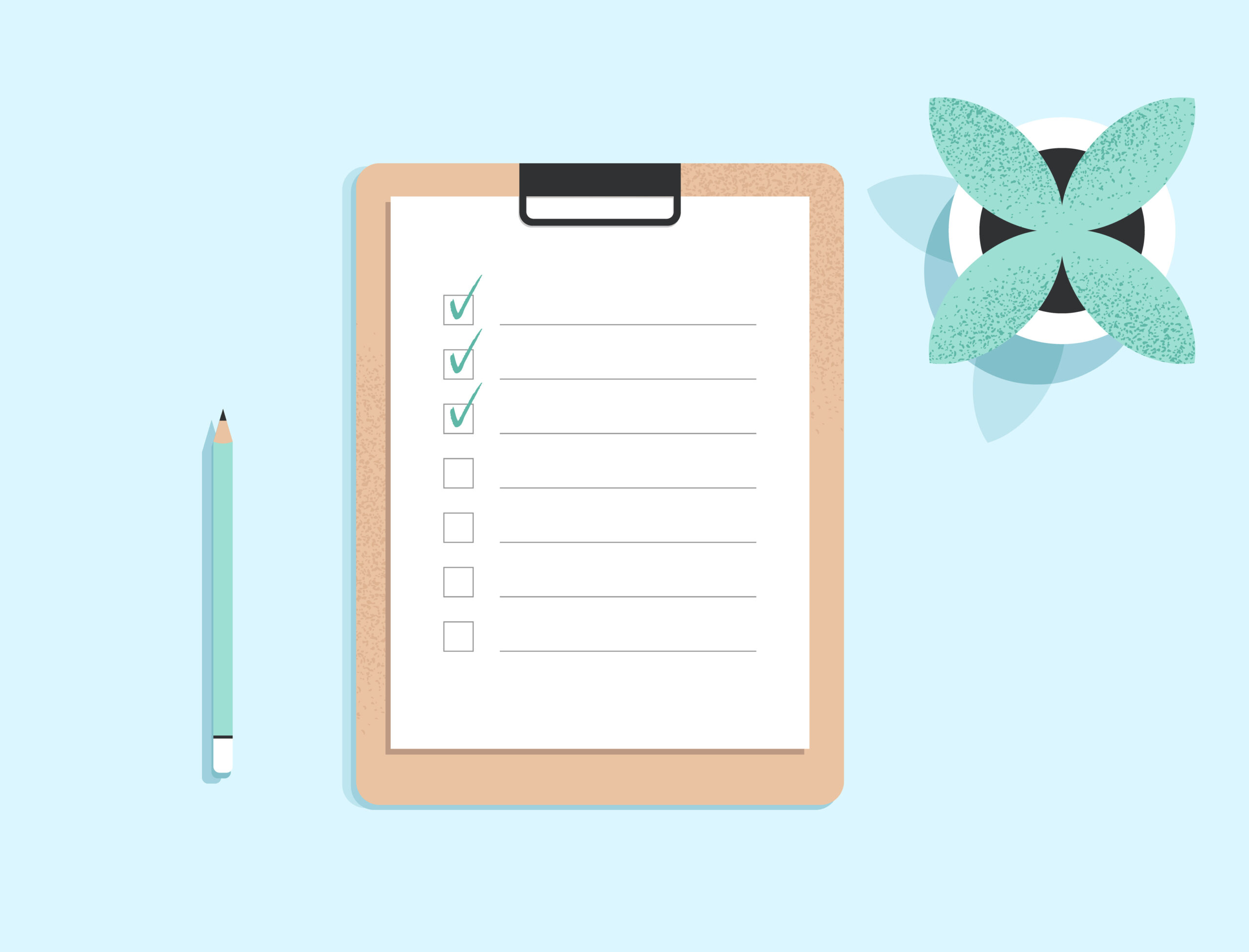
Frequently asked questions
A combination of chemical treatments, household cleaning, washing at over 60 degrees and freezing is recommended to combat a bed bug infestation.
Under French labor law, an employee can exercise the right to withdraw from work if he or she feels that there is a serious and imminent danger to his or her health. Is this the case for bed bugs? Unfortunately, the legal framework is not clear on this issue. Decisions are made on a case-by-case basis. In the event of a dispute with the employer, a judge will have to rule.
By law, the maintenance and cleaning of a dwelling is the responsibility of the tenant. If bed bugs appear during the lease, it’s up to the tenant to take care of the necessary treatments.
The lessor, for his part, must, before signing the lease, make available “decent accommodation that does not reveal any obvious risks that could affect physical safety or health, free from any infestation of harmful species and parasites ”- Law n°2018-1021 of November 23, 2018.
It is also required to take action to eradicate bed bugs in communal areas.

